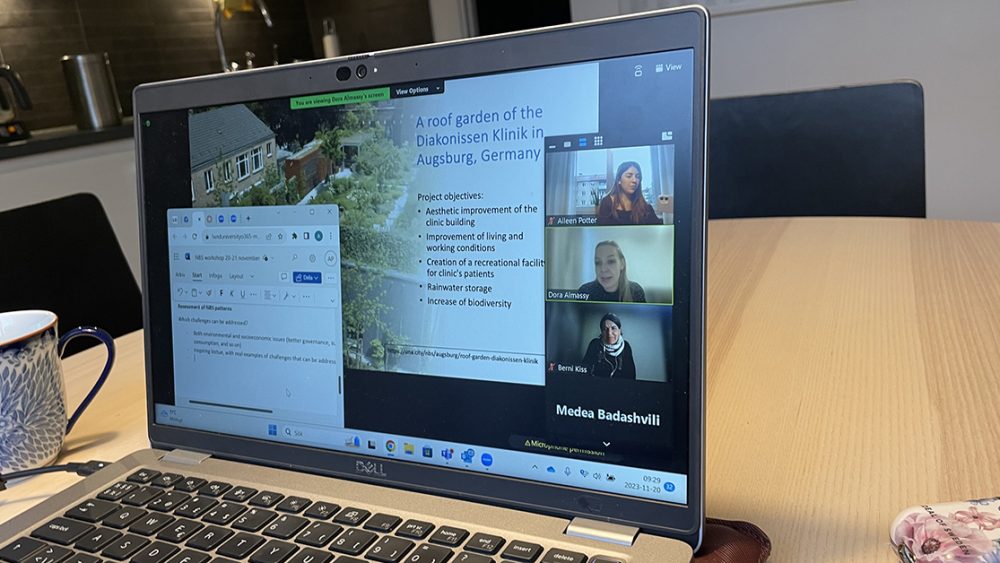Amidst the urban challenges of our time, the imperative for innovative solutions has never been more pressing. The recent two-day live session in our programme ‘Innovation in Governance for Urban Nature-based Solutions’ brought together a dynamic cohort eager to explore the transformative potential of Nature-based Solutions (NBS). Against the backdrop of an urban landscape grappling with environmental and socio-economic complexities, this capacity-building programme seeks to empower public administrations to lead change and innovation.
In our live session, held on 20-21 November, we were joined by guest lecturer Dora Almassy, who is active in the Urban Nature Atlas project. With its collection of over 1000 case studies, the project is considered to be the most comprehensive database of urban nature-based solutions to date. This makes it a highly relevant and valuable resource for participants in the NBS programme.
During the session the participants engaged in insightful conversations on various topics, including which challenges can be addressed through NBS, the different methods of implementation through governance arrangements and the role that stakeholders hold in this process. The Urban Nature Atlas was used to give real life examples of NBS innovation in practice and the participants got to explore and analyse examples of Nature-based Solutions that they themselves had chosen prior to the session.
A key aspect of the live session was the importance of Nature-based Solutions addressing multiple sorts of challenges, both environmental and socioeconomic as well as the value of creative solutions in the implementation process. One example that the participants got to discuss was Hamburg’s Green Roof Strategy where the objective was not to create green roofs but instead create a long-term strategy with the goal of enabling and motivating different actors to implement green roofs by themselves. This was achieved through creating new legislation, offering consultation and implementing subsidies to cover up to 60% of installation costs.
When discussing the role of stakeholders, one participant concluded that: “A difficult aspect of NBS is involving communities in our home countries, and therefore it is inspiring and fascinating to hear of examples where projects have succeeded in this aspect, particularly when it comes to communities with challenging target groups such as elderly”.
The participants all seem to have completed the live session feeling more inspired than before, and ready to soon be taking on their own NBS projects.
About the programme
The purpose of the twelve-month programme “Innovation in Governance for Urban Nature-based Solutions” is to strengthen the capacity for innovation and sustainable governance among public administrations that govern major cities. In particular, building capacity in the areas of transformational ability and leadership, and innovation in management.
It is provided by the International Institute for Industrial Environmental Economics (IIIEE) in collaboration with LUCE, the Department for Commissioned Education at Lund University.


tlovertonet
Loving the information on this web site, you have done outstanding job on the blog posts.
smortergiremal
Appreciate it for this post, I am a big big fan of this internet site would like to proceed updated.